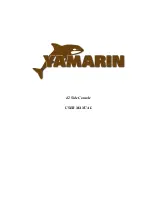
BENETEAU 331
Page 10 of 73
Jan. 10, 2003
rev 02
ANCHORING
Various sea and bottom conditions require different anchoring systems. Your
dealer can help in choosing rode size and length, anchor chains, and working and
storm anchors most appropriate for your boat and location.
In general, a minimum of two anchors should be carried at all times and enough
anchor rode and chain necessary for the depth of water to be navigated during
storm conditions.
Certain anchors are useful for a variety of bottom conditions. Study the charts of
the area to be navigated for information concerning bottom conditions and water
depth.
The greatest hazard with a sound permanent mooring is the chafe, which can occur
to the rode at the bow chocks. This is the single most common site of failure.
Care is advised in the selection and protection of the rode pennant with appropriate
chafing gear. Careful and regular inspection of moored boats on a regular basis is
necessary to ensure the boat's safety.
ADDITIONAL SAFETY EQUIPMENT
A number of additional safety items are worthy of your consideration. These
range from safety harnesses to emergency beacons, life rafts, and survival suits.
Their use depends upon the intended use of the yacht. We suggest you investigate
the necessity of these items through discussion with your dealer or local chandler.
MEDICAL KIT
Every yacht should carry a first aid manual, and a medical kit tailored to the
specific needs of the owner. Any ship's store should carry a standard type
medical kit. Items in the kit should include but not be limited to the following:
•
Aspirin
•
Motion sickness pills
•
Adhesive strips and tape
•
Ammonia
inhalants
•
Antiseptic
wipes
•
Antiseptic germicide ointment
•
Gauze
bandages
•
Zinc oxide ointment
•
Sunscreen first aid/burn cream
•
Insect/bee sting relief ointment/spray
•
Sterile
pads
•
Cold packs for sprains
•
Ace bandages & splints
•
Scissors
&
tweezers











































